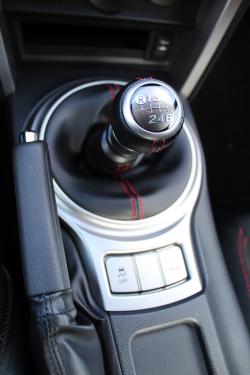Review and photos by Peter Bleakney
Photo Gallery:
2013 Scion FR-S
I can’t think of too many cars whose sole raison d’etre is to have the livin’ snot driven out of them. But there you have it. This side of a racecar, the front-engine rear-drive Scion FR-S is one of the rare few. Okay, corporate-cousin Subaru BRZ too, but to a slightly lesser degree.
And what brings me to this conclusion? Simply, Toyota and Subaru’s raucous little love-child makes the most sense, nay, provides untold gobs of motoring yahoo when it’s grabbed by the scruff of its neck and thrashed mercilessly. The rest of the time, driving the FR-S can be a bit of a chore.
So let’s get these can’t-be-ignored and, some could argue, missing-the-point practical considerations out of the way.
First, the ride is tiresomely harsh on anything less than smooth pavement. (The Subaru BRZ has slightly more forgiving underpinnings.) Second, the constant racket within the cabin, both from the road and specifically the engine, is not particularly pleasant. To me, an integral part of the sports car experience is aural, and the gruff noises emitted by this 200-hp, 151 lb-ft Subaru 2.0L flat-four with the trick Toyota-developed direct and port fuel injection is not music to my ears.
|
2013 Scion FR-S. Click image to enlarge |
Subaru aficionados will surely disagree.
And yet, without this engine the FR-S could not exist. Why? Because it’s super flat – more so than the 2.0L flat-four found in the Subaru Impreza and XV Crosstrek. It was developed specifically for the FR-S/BRZ duo and it allows these cars to have a very, very low centre of gravity.
Officially rated at 9.6 L/100 km city and 6.6 highway, I observed 9.1 L/100 km.
Subaru engineers (this car was largely developed by Subaru) say they benchmarked the Porsche Cayman. No arguments from me. The first time I drove a BRZ at TestFest, the mid-engined Porsche immediately came to mind. The BRZ/FR-S wraps itself around you in a dynamic cohesiveness that serves up sublime balance and a reassuring sense of knowing exactly what the car is doing and what it is about to do.
 2013 Scion FR-S. Click image to enlarge |
It has terrific steering, fantastic seats, and a great little snickety shifter. Bringing it all together are the perfectly placed controls. If you’re into heel-and-toe downshifting, this car is your friend.
At 1,251 kg (with manual transmission) the Scion FR-S is a relative lightweight. Light on the wallet, too, with a base price of $25,990. This includes 17-inch alloys shod with 215/45×17 Michelin Primacy HP tires (same as the Prius), tilt and telescopic leather-wrapped steering wheel, Bluetooth and USB.
Some whine about the FR-S’s modest power and grip, but therein lies the genius of this sports car. With only 200 hp and 151 lb-ft, you can explore the limits of the rear-drive chassis (read: drive the snot out of it) and not get the “Go to Jail Immediately” card. Okay, power oversteering on the way to the grocery store can land you a “stunt driving” charge in Ontario.
Journalists got the opportunity to drive the Subaru BRZ and Scion FR-S back-to-back on the TestFest handling track and there are marked differences. The BRZ has slightly more compliant tuning, which translates to a more neutral disposition on the track. The FR-S is harsher and more tail-happy – tuned for the drifting set.











